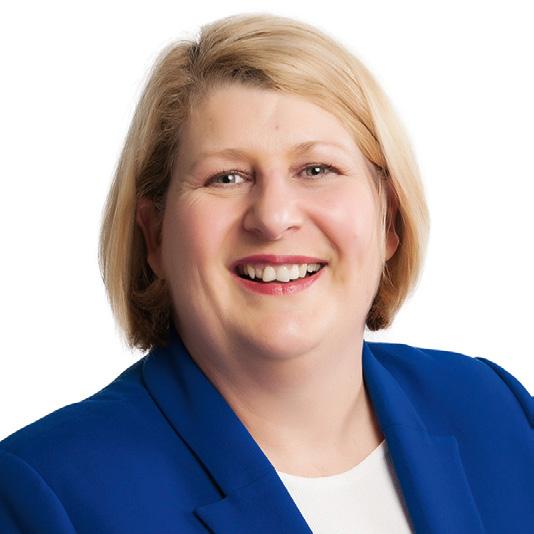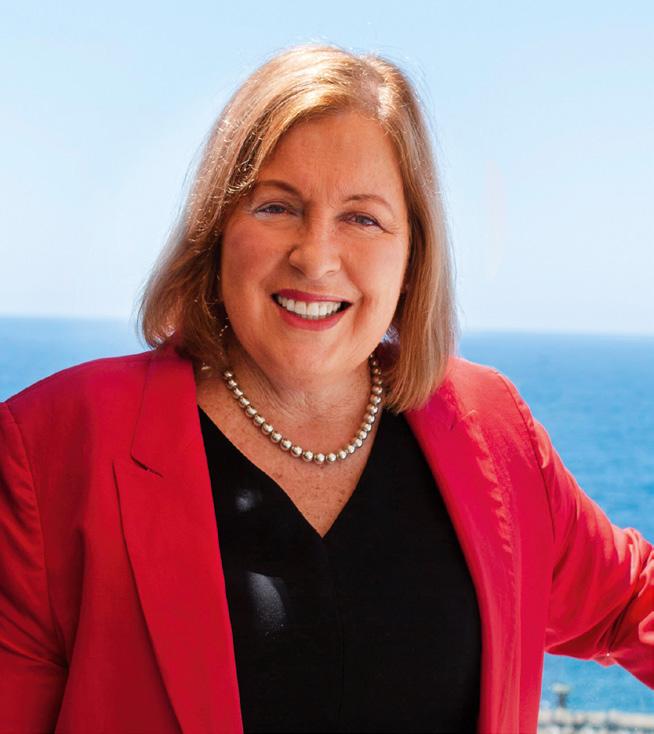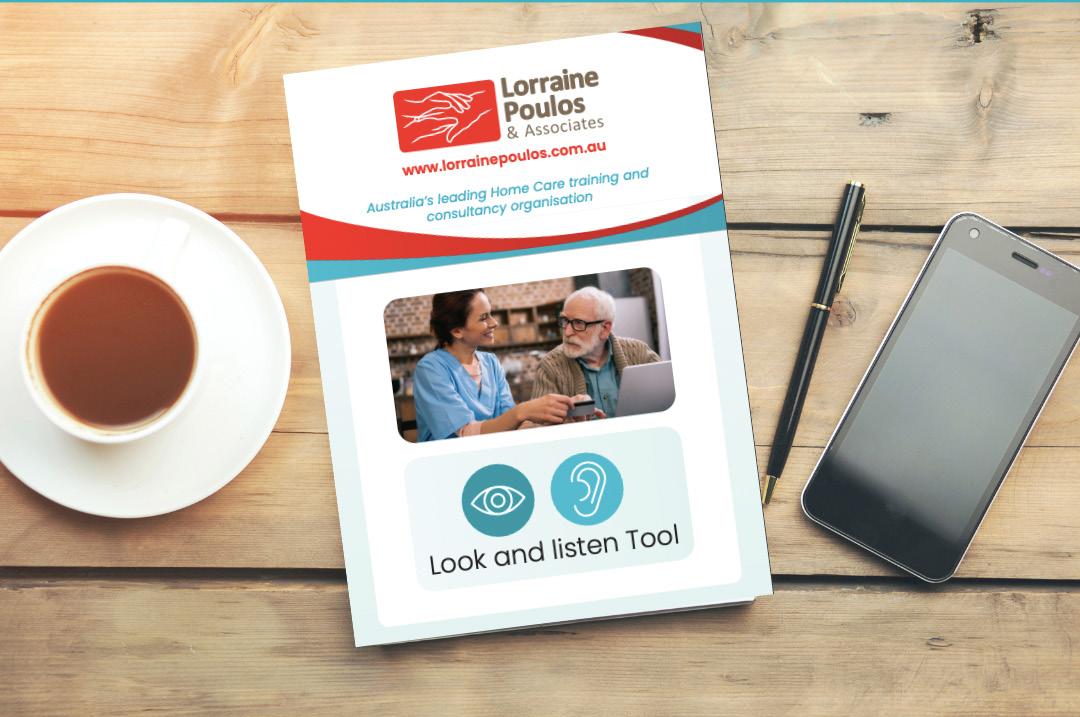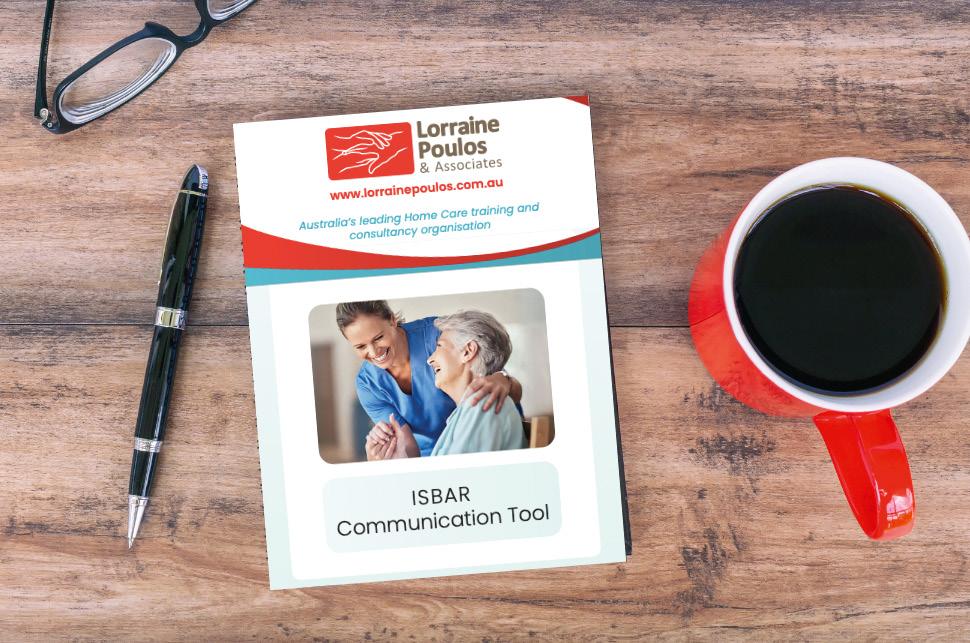

Taking steps toward reform
When a major change is on the horizon, it pays to be prepared. This is why the initial July 2023 start date for the home care reforms was postponed. Stakeholders provided feedback that the process was being rushed and that, if implemented, home care recipients could be put at risk.
The new Labor Government agreed and announced a new start date of July 2024. “We will use the extra time wisely to work with older Australians, their families and carers, workers, advocates and providers to do everything we can to achieve a better in-home aged care system,” said Minister for Aged Care Anika Wells in a statement.
While July 2024 may seem a world away, the time for providers to ready themselves for reform is now. That’s the advice from the expert team at LPA (Lorraine Poulos and Associates) – which provides consultancy, training and support to the aged, disability, health and home care sectors.

“Right now, providers have an 18-month window of opportunity,” Jeremy McAuliffe tells Australia Ageing Agenda. “This is the year they need to start to take the key steps toward reform,” says McAuliffe, a senior consultant at LPA.
Reform that aims to completely reconstruct the present system, a system that currently consists of four service strands – the Commonwealth Home Support Program, Home Care Packages Program, Short-Term Restorative Care Program and residential respite.
As the Royal Commission into Aged Care Quality and Safety noted, the current structure is unwieldly and unnecessarily complex. Wait times for home care services were deemed to be too long and administration fees far too high. The royal commission noted services are not always strategically targeted, and older Australians do not always get the help they need to support living at home.
For most people, particularly those who are
An overhaul of the home care sector is in motion and large-scale changes are afoot. Lorraine Poulos and Associates (LPA) offers a range of resources to help providers navigate a challenging road ahead.
“Only the nimble will survive.”
older, home is where they wish to be. According to a 2020 Roy Morgan survey on behalf of the royal commission, only 25 per cent of older people would want to live in an aged care facility if they required help.

In June 2022, almost 237,000 Australians had access to a Home Care Package, among more than a million older Australians receiving government-funded assistance at home.
The new in-home aged care program is being designed to enable more Australians to live independently and for longer.
Consolidated into a more streamlined, consumer-centric service delivery model, the aim is for the new program to become easier to access and simpler to navigate.

With a strong focus on consumer choice, clients and their families will be firmly in control of the services they receive and how they are managed.

There will be an external assessment of need, a quarterly budget provided to older Australians and it will be much easier for them to choose their preferred provider. “This will intensify an already competitive sector” says managing director of LPA, Lorraine Poulos – who has worked in the health and aged care sectors for almost 40 years.



“It’s about managing expectations and embracing a new dynamic that involves working in partnership with the consumer,” adds McAuliffe.
– agrees. “The in-home care market abounds with standardised models for care and service delivery,” she tells AAA
Help available LPA helps providers navigate the new home care landscape through:

• tailored workshops
• presentations to boards about reforms
“As the old book says, ‘You can’t put new wine into old wine skins, it will split’. Similarly, providers who seek to offer the same old home care model in the new framework are likely to be uncompetitive; it just won’t work. To be competitive, the reforms proposed will require providers to be innovative and responsive to the changing needs and preferences of older Australians,” Pringle says.
• education to care managers about the changing role and the need to upskill – particularly around health literacy and deteriorating conditions
• undertaking reviews of structure and service models
• time-in-motion studies
• provision of checklist and action item guidance materials
• provision of resources and educational materials
• intensive face-to-face Roadmap to Reform workshops in each capital city.
Currently, the system as it stands encourages home care clients to view their provider as a one-stop shop and to use their services exclusively.

But as Pringle notes: “In the new world, people can use any registered provider they want for their approved services, resulting in much greater choice in who can provide services and when.”
Although the nuts and bolts of the revamped in-home aged care program have yet to be finalised, according to a discussion document released by the Department of Health and Aged Care in October last year, the new program should:

• be simple to access and understand, so that older Australians don’t have to waste time getting the care they need
• provide people with timely access to the safe and high-quality services they need so they can live at home for longer
• provide people with real choices about who provides their services and the types of services they receive
• have fair and transparent fees, and ensure funds are directed towards care
• support workers to deliver the highest standard of care for older Australians living at home

• support providers to be more innovative and to invest in improvements to service delivery.
The proposed home care reforms mirror those introduced to the disability care sector when the National Disability Insurance Scheme was overhauled to better meet participants’ unique needs.
There are lessons we can learn from the NDIS experience, Poulos tells AAA. In June 2017, there were 4,005 registered providers supporting NDIS participants; by June 2021, that number had ballooned to 16,526 – a 400 per cent increase.
“We can expect similar growth for in-home aged care,” Poulos says. “Prospective providers regularly contact LPA to inquire about how they can enter the market. So, providers can’t just sit back and do nothing. Change is coming. They will need to be proactive and innovative to survive and thrive.”
Among the many changes on the cards, the new in-home aged care program proposes to introduce risk-proportionate regulation. This means third-party agencies offering low-risk services such as gardening or home maintenance services, for example, will find it easier to obtain status as a registered provider.
“This will open up the market to many new providers, increasing competition,” says Poulos.
Meanwhile, services that have a higher degree of associated risks – such as personal and clinical care – will come under greater accountability and scrutiny.
“The care manager role will change
Home care provider must-haves
• clear understanding of the cost of doing business
• worse-case, best-case scenario planning
• processes to engage and partner with consumers in the design and delivery of care
• systems to identify and manage highprevalent, high-impact risks
• a practical corporate and clinical governance framework
• strategies for equipping and upskilling governing bodies
• a workforce strategy
• a skilled and knowledgeable workforce in clinical care tasks
• systems to ensure sustainability in a competitive market
• a strong marketing strategy
• policies and procedures to manage the increasing complexity of healthcare
• strategies to support codesign and selfmanagement
• approaches to embrace restorative care
• technology to maximise efficiency and outcomes for older people.
dramatically. It will require skill levels capable of conducting clinical reviews,” Poulos tells AAA.
Now is the time, says Poulos, for providers to “drill down on current care roles and functions, and adapt accordingly.”
It’s just one area where LPA can help, she adds. “We have a team of experienced clinicians who will be there to support providers to ensure they’ve got their policies up-to-date, their training in place and robust clinical governance.”
Providers will also need to invest in assistive
“The care manager role will require skill levels capable of conducting clinical reviews.”
and digital technology. Workforce shortages mean many providers may struggle to meet the demand of older Australians. An innovative and effective workforce strategy will be essential to remain sustainable and competitive.
One strategy to combat the sector’s workforce pressures – which are unlikely to ease anytime soon, is the use of assistive technology. There will also be separate revenue streams for providers who adopt AT in the new in-home aged care program.

“The use of telehealth can dramatically improve health and wellbeing outcomes for home care clients,” says Poulos. “Through face-time platforms, registered nurses can review wounds and provide real-time advice and expert opinion.”
To transition to the new arrangements, McAuliffe urges providers to begin exploring new options immediately.
“Start now. Test and trial over the next 12 months,” he says. “Build capacity and a track record of delivering alternative service types in advance of future registration requirements.”
Those who ‘wait-and-see’ are likely to be left behind, advises McAuliffe. Providers must reexamine their business models ahead of the game change, he says. For instance, the new home care environment will feature on-demand fixed-priced services, McAuliffe tells AAA.
James Lim – another senior consultant at LPA – agrees on the need to review services now. “The role of the provider will move away from that of an all-encompassing package provider, to a provider of fixed quantities of specified services,” Lim tells AAA. “Now is the time to ensure that you understand if your current price for these service types covers costs, and to be clear about what drives these costs.”
Only the nimble will survive, warns Poulos.
what they’re doing if staying in business merely means they are only just keeping their heads above water?”
A business model solely reliant on government funding is unlikely to be sustainable in the long term, says Poulos.
“Providers will need to have different business streams up and running and have the right infrastructure to support service delivery.”
Ultimately, as the changes start and the home care landscape becomes more competitive, providers will need to become more adept at attracting and retaining new clients, says McAuliffe.
“They must learn to promote their services better, then sell – and then up-sell. Profitable organisations do these things and do them well.”
Poulos acknowledges that the the royal commission, the workforce crisis, and the repercussions of ongoing Covid may leave providers feeling exhausted and daunted by the changes to come.
Many will be experiencing reform fatigue, she says. “It’s very difficult and challenging for providers – I understand that.”
But Poulos is also keen to acknowledge that most home care providers already have “all the ingredients” of a good, sound business model at hand.
“But they might need support – LPA can support them to navigate the changes and assist in developing a viable plan for the road ahead,” she says. n

“Providers must learn to promote their services better, then sell – and then up-sell.”
